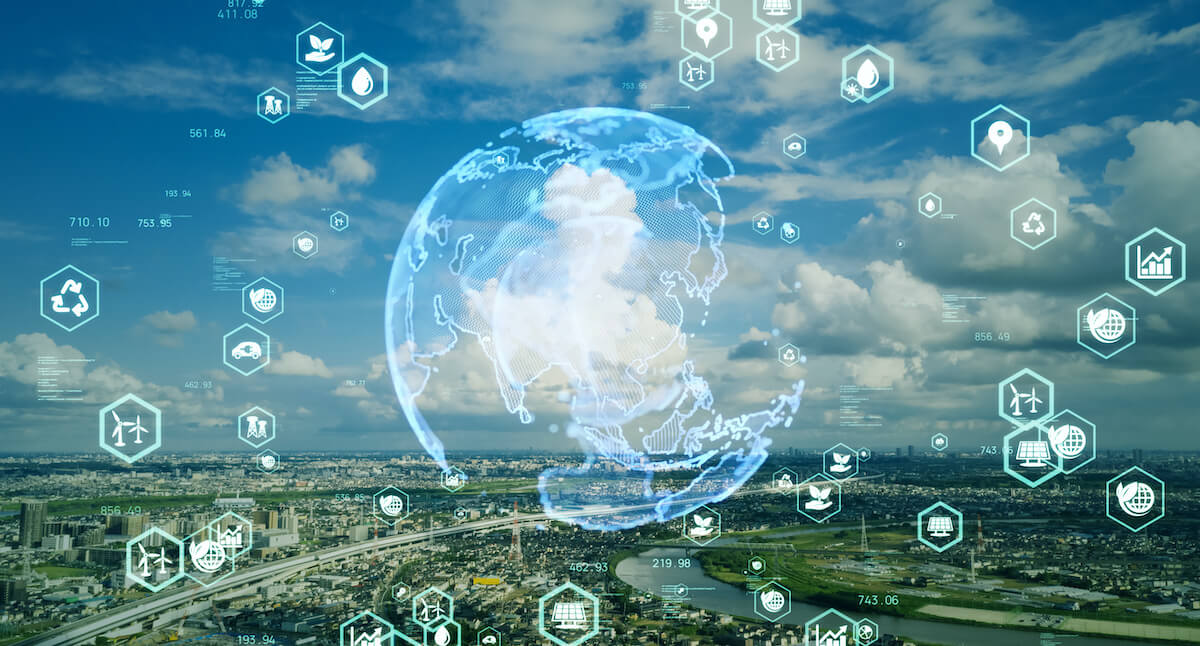Two interesting pieces of climate news emerged in the second week of January 2023. The first was a report in the Wall Street Journal about the cost of damage due to climate incidences. The U.S. National Oceanic and Atmospheric Administration said this week that weather-related disasters caused $165 billion of damage in the country last year, the third-highest figure on record. A single hurricane, Ian, was largely responsible. But later in the article: Rating firm, Moody’s, said that fiercer hurricanes and rainstorms are eroding the profits of the reinsurance sector, with insured natural-catastrophe losses averaging $100 billion over the past five years. Note that those are insured catastrophic events, and probably don’t include the disaster that took place in Pakistan this past year that got a lot of press at COP27. (Source: WSJ Climate & Energy: An Arms Race with the Weather Published 1/11/2023)
The second piece of news was on the positive side where a firm in Iceland successfully removed CO2 from the air. The captured carbon is then combined with water and stored underground. Companies such as Microsoft are paying for these carbon credits to offset their lack of carbon neutrality.
So, my sustainability takeaways are that in some places we are making progress, but there is still a lot of progress to be made.
Reaching $1T the Right Way: A Sustainable Path
At the 2023 SEMI Industry Strategy Symposium, the theme was: Reaching $1T the Right Way: A Sustainable Path. Most of the presenters had some comments on sustainability and working to net zero, but as I observed above in the news releases, the semiconductor and microelectronics industries are making progress, but there is still a lot of progress to be made.
Sustainability has yet to become a focus in the forecasting arm of the industry. The one exception is that the improvements in the chips for the grid as well as electric vehicles (EV) will continue to drive the power chip markets over the next 10 or so years.
One of the end-user segments of the semiconductor industry, AWS, Google, and Microsoft, all presented and had comments on the sustainability space. David Pellerin Head of World-Wide Development for Infotech and Semiconductor for Amazon Web Services commented that one reason for Amazon designing its own chips is to help with sustainability.
Using the custom silicon, Amazon claims it can reduce the on-premise footprint of data centers. The impact depends on location and AWS getting to 100% renewable power in 2025, as shown in Figure 1.
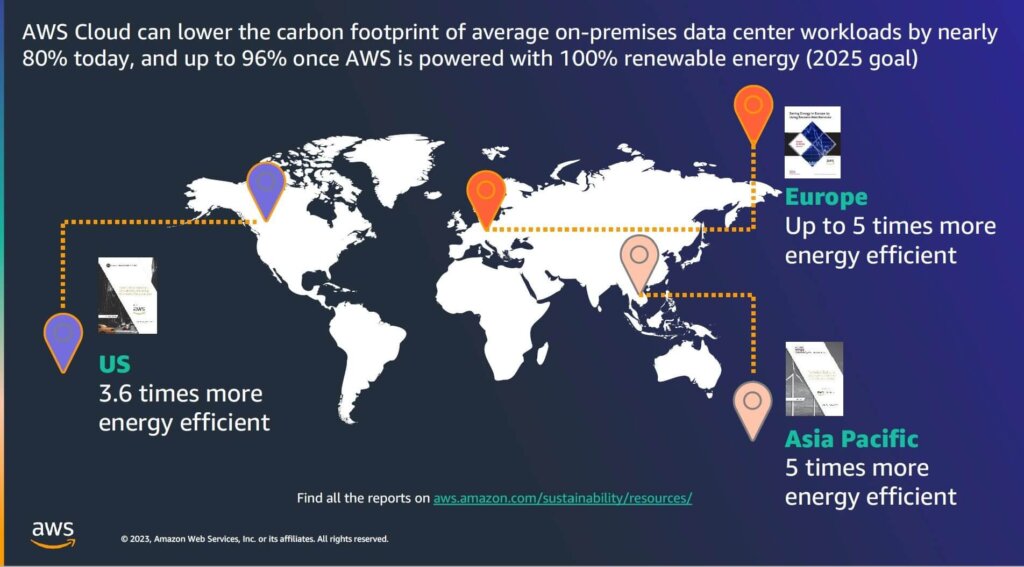
AWS also commented that the custom silicon they are building, the Graviton 3, uses 60% less energy for the same performance and that the Inferentia, the AWS inference chip, is also power efficient.
Google didn’t go quite into the level of detail on energy savings as AWS did. However, Caroline Seward, Vice President of Custom Silicon, commented on the energy efficiency of the Tensor silicon chips, as well as Google’s focus on plastics recycling and incorporation into products, and e-waste recycling.
Microsoft was light on the sustainability focus, instead focusing on how the Microsoft ecosystem could help companies address the technical challenges facing them.
Both AWS and Microsoft discussed digital twins, for factories and automation, and that using digital twins can optimize the performance of a system, building, or factory. From my perspective in a previous life, using digital twin technology enables a company to see if its operations are at optimal performance. Running a digital twin has the potential for considerable energy savings and the potential to optimize a factory and improve yield and manufacturing performance. However, there is the cost of setting up and maintaining a digital twin, which has many companies dragging their feet.
My one disappointment in these presentations was that there was no mention of conservation. In looking at these companies’ energy consumption in their ESG reports, it keeps increasing. Yes, they are using mostly renewables, and all have a net zero by 2030 to 2040, but the consumption of energy continues to climb, and the purchase of carbon credits continue to climb, which doesn’t get us closer to our goal. The massive purchases of power purchase agreements, and carbon credits, have the possibility of driving up costs for these resources, thus keeping companies that don’t have deep pockets from reaching their sustainability goals by the 2050 timeline.
The Semiconductor Industry Outlook
JSR, Applied Materials, and Edwards discussed some different aspects of what sustainability challenges facing Semiconductor materials and equipment companies and their supply chains.
JSR started out by showing how many companies worldwide have made commitments to reaching science-based targets. Multiple companies in the semiconductor ecosystem have set targets and are working to get approval or have achieved approval.
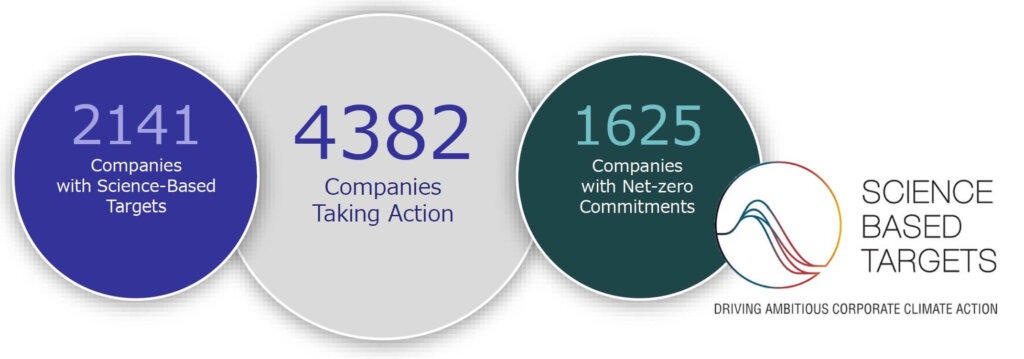
Eric Johnson, Representative Director and CEO of JSR Corporation, also discussed the shortfalls. Although there has been a significant focus on sustainability over the past few years, greenhouse gas emissions are at all-time highs, and as I pointed out earlier, climate disasters are becoming more common and costly. Johnson discussed the issues in tracking scope 3 emissions and greenwashing, which is all too common in sustainability reporting. Johnson also discussed some of the positives which I will highlight a bit later.
Kim Vu a senior manager for the SUCCESS2030 program at Applied Material gave a view of Applied Materials, as well as Vu’s personal journey in dealing with the supply chain on sustainability. Suppliers fall into the scope 3 emission category, and this is one of the key challenges in developing a successful sustainability campaign and achieving the SPTi approval, as well as reducing a company’s overall GHG emissions footprint. Vu pointed out that suppliers are trying, but sometimes need help to figure out how to improve their sustainability focus.
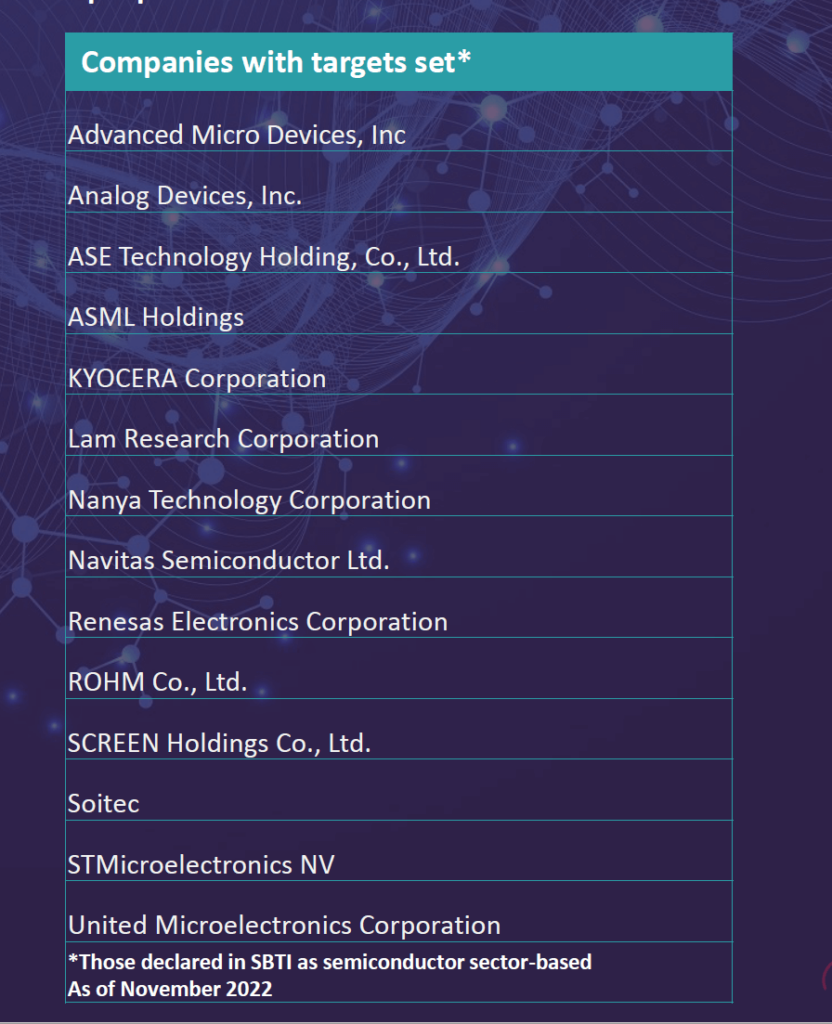
Paul Neller, Vice President of Marketing at Edwards, gave a rather dour outlook on the sustainability front. While Edwards has helped to make some inroads on the sustainability front in the EUV space, reducing GHG by 536 tons a year. Edwards has also collaborated on reducing energy consumption on the sub-fab, which he didn’t mention.
Neller noted that industry needs to commit to science-based targets, and said we can only make a truly material difference together. He pointed out that multiple companies’ targets have been approved by the SBTi as shown in Figure 3. It’s a fairly strong list and multiple other companies are working to get their data organized so that they can apply. Two of those companies are Intel and Applied Materials. From my perspective, this is a big positive, and the momentum in the semiconductor space is continuing to grow.
As I mentioned earlier, there are multiple sustainability successes taking place in the semiconductor space. Edwards showed one example with EUV. TSMC and Intel have been diligently working on water conservation with goals of being water positive in the not-to-distant future. Applied Materials has multiple programs for improving system energy performance in the sub-fab. And Intel and TSMC both have potential solutions for reducing energy levels used for cooling in server farms, which could reduce energy consumption by 20-30%
Mousumi Bhat of SEMI closed the session with an update on the SEMI Sustainability Initiative, which now has 75ish members, and a plug for one of my favorite SEMI programs. the startups for sustainable semiconductors.
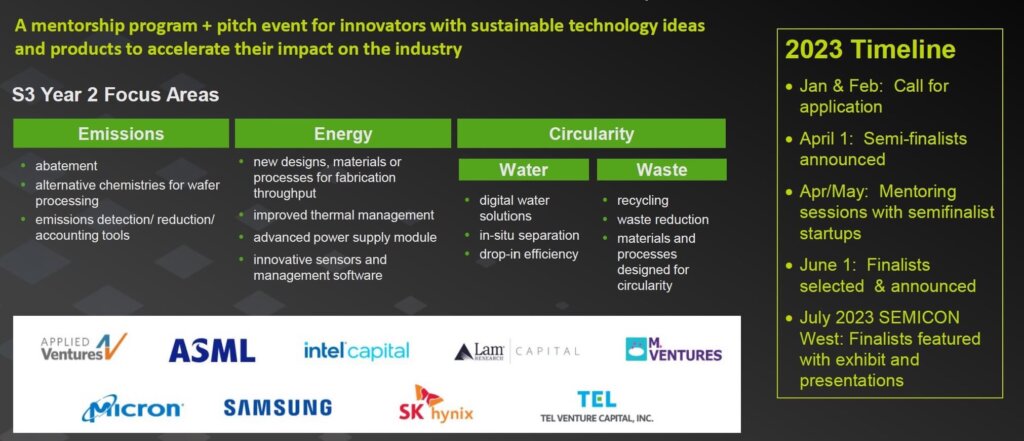
The program enables either startups or companies with ideas to pitch to VCs and potentially create real change in the semiconductor sustainability space. Some ideas from the first year’s program, are reverse osmosis filters that require less energy to operate, and motors that don’t use as much copper and use less energy to achieve the desired results.
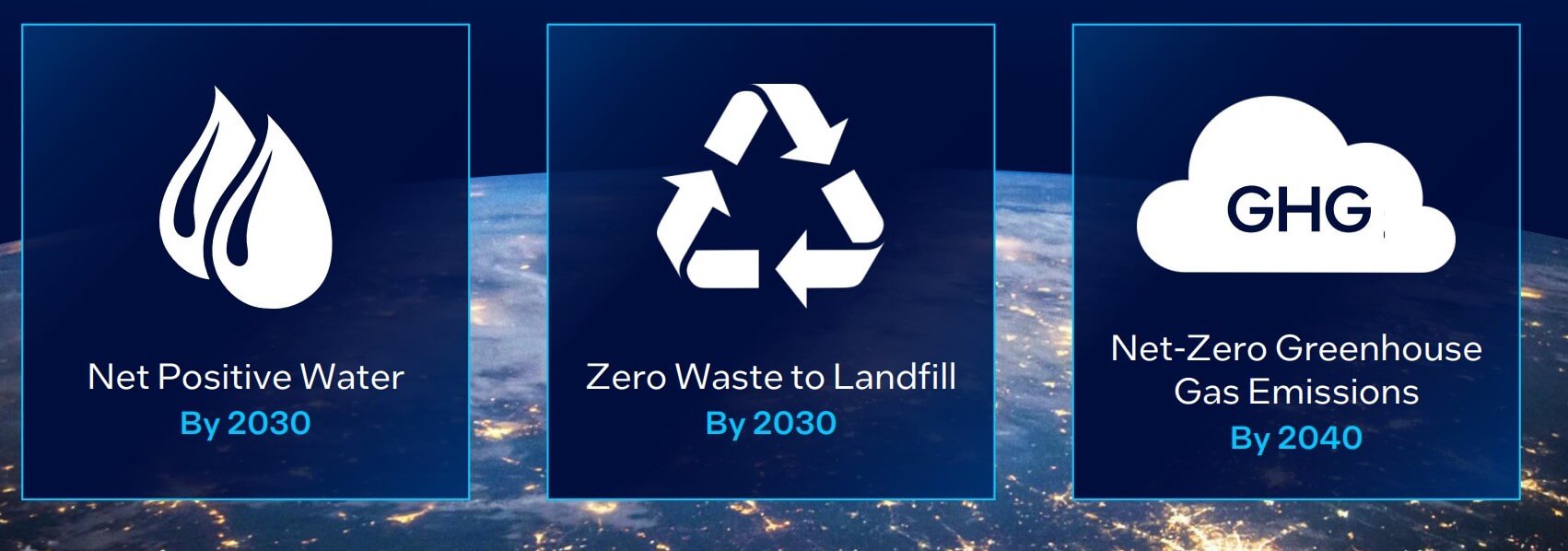
So, in closing, I think the industry is making great strides in the sustainability space. Multiple areas of focus have been identified, and companies are collaboratively working towards creating solutions. I think the industry efforts can be wrapped up in a slide that was presented by Keyvan Esfarjani Executive VP, chief global operations officer, and general manager of manufacturing, supply chain, and operations at Intel. Working at leaving our communities better than we found them! The semiconductor industry may not be able to impact all the world’s CO2 footprint, but by putting the focus we have on the ESG issues, we should be able to successfully impact the microelectronics ESG footprint in short order and make the communities we work and serve in better than we found them.




